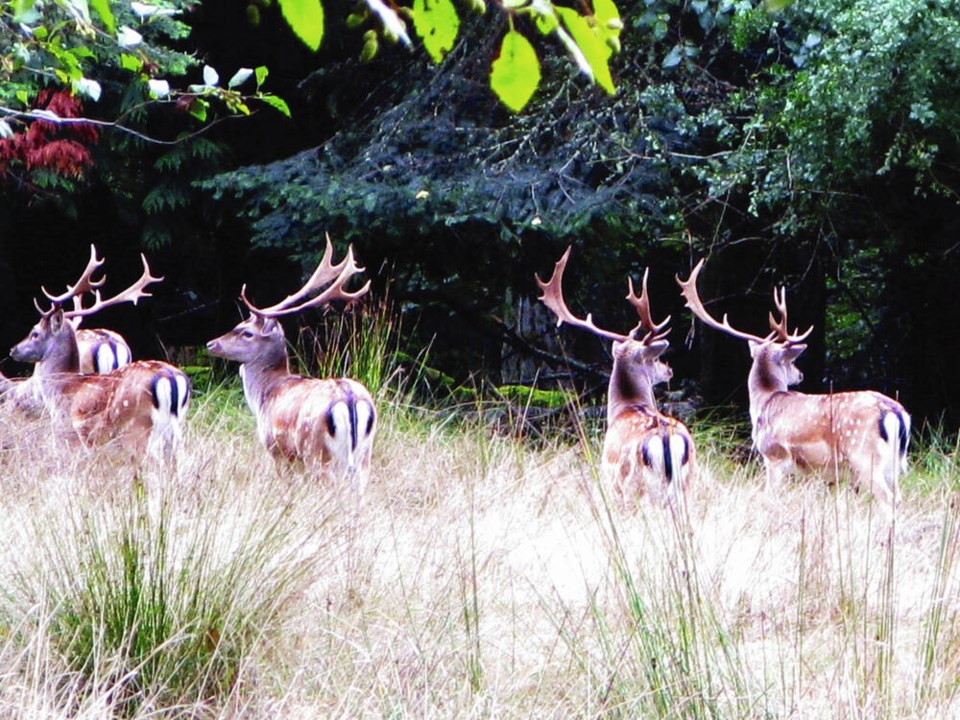With a $5.9-million project to eradicate invasive deer from Sidney Island and restore native plant species set to start in the fall, many are questioning the price tag.
“It’s unnecessary. It’s a very costly endeavour for a non-existent problem,” said Frank Nielsen, a property owner on Sidney Island who spends about half of the year there.
Nielsen said he would have seen the need for an eradication years ago, but he believes regular hunting has reduced the European fallow deer population, and the island no longer has a problem. “We did have a problem. We solved it. And now, [Parks Canada] wants to spend $6 million to take the remaining 300 deer from a helicopter, and dogs. It’s just way too much for a problem that doesn’t really exist,” he said.
The Parks Canada project involves two marksmen in a helicopter and another two on the ground killing as many fallow deer as possible over a 10-day period starting in the late fall. A year later, any survivors would be flushed out, contained using fencing and trained tracker dogs, and shot.
Parks Canada controls about 440 hectares on the north end of Sidney Island — including Sidney Spit — as part of Gulf Islands National Park Reserve.
The invasive deer are responsible for drastically reducing Sidney Island’s biodiversity and removing important native species by overbrowsing, Parks Canada says. The goal of the project is eventually to restore endangered Garry oak and Douglas fir ecosystems.
A report on harvest numbers for 2022-23 shows a significant decline in the total number of deer removed each year, dropping from 436 in 2014-15 to 88 in the most recent year. Those numbers include both invasive European fallow deer and native black-tailed deer, which accounted for 10 per cent of last year’s total.
Nielsen, who has owned property on Sidney Island for 19 years, said he used to see dozens of fallow deer at a time in open fields by the airstrip.
“I’ve been there and I’ve got two deer with one bullet. And that wasn’t the only person that did it. The numbers were huge,” he said.
Kate Humble, superintendent of Gulf Islands National Park Reserve, said while the number of fallow deer is currently relatively low, the population has gone through cycles of rebounding to unsustainable levels after dropping over the past few decades.
“Every time there’s been a significant reduction, it has come back,” she said. “And so, long-term sustained recovery of the ecosystem is simply not feasible unless the population is entirely removed.” Since the early 1980s, 15,000 fallow deer have been removed from the island through ongoing hunting and culling, and despite those efforts to reduce numbers, the forest understory has not sufficiently regenerated, Humble said.
The cost is projected and could end up being lower than $5.9 million, Humble said. It covers the project between 2018 and 2026 and funds consultation with the public and Indigenous communities, support of annual hunting for W̱SÁNEĆ community members, the removal of invasive plants and replanting of native species, and the deer-eradication project.
Gregg Howald, director of Coastal Conservation, the company contracted to remove fallow deer from Sidney Island, said using helicopters will allow the hunters to locate more deer in less time and find deer in areas not easily accessible on foot. It will also improve understanding of the movement and behaviour of the deer that will aid in the second phase of eradication on the ground, he said.
The project has long divided residents of the small community, who own 1,500 hectares in 111 bare-land-strata lots. They were given final say on whether the cull would go ahead and voted 52 per cent in support in March.
Humble said anyone who wants to better understand the complex project should read the draft detailed impact-assessment report, which is available on request by emailing [email protected].
>>> To comment on this article, write a letter to the editor: [email protected]



